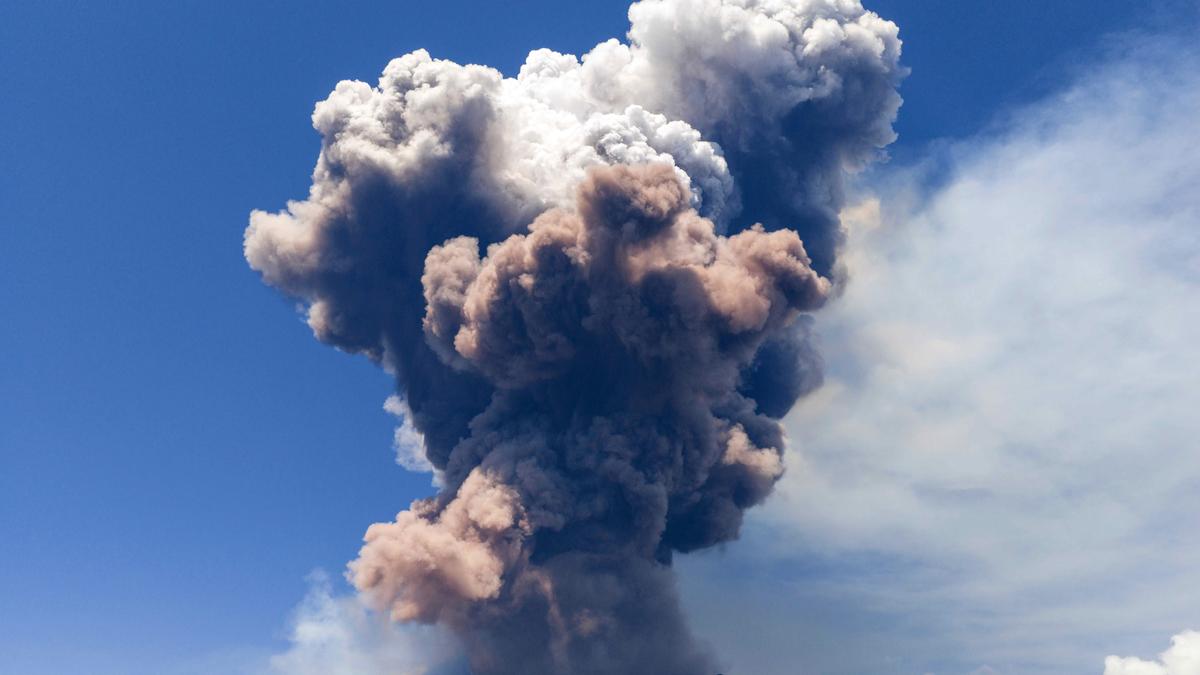
Smoke billows from Mount Etna volcano, Italy, on June 2, 2025.
| Photo Credit: Giuseppe Distefano
Mount Etna in Sicily, Italy erupted once again on Monday (June 2, 2025), putting up a spectacular display even as it sent a cloud of smoke and ash up several kilometres into the air. According to the authorities, the eruption does not pose any threat to people, although the alert level of the Catania Airport was raised. The ash cloud ended by afternoon.

More about Mount Etna
A UNESCO world heritage site, Mount Etna is one of Europe’s, and the world’s, most active volcanoes. At least 2,700 years of eruption activity have been documented for the volcano, which, according to UNESCO, makes this one of the world’s longest documented records of historic volcanic activity.
Sicily’s Mount Etna erupts
Sicily’s Mount Etna erupts
| Video Credit:
The Hindu
Mount Etna roughly stands at an impressive 3,300 metres, which is approximately four times the height of Burj Khalifa, the world’s tallest building.
Unlike many other volcanoes that remain dormant for years before they erupt, Etna remains in an almost constant state of unrest.
Mount Etna is a type of a stratovolcano, which is a conical style volcano. According to the British Geological Survey, stratovolcanoes are formed from viscous lava that does not flow easily and instead, deposits around the vent, adding to the slope structure. Around 60% of the earth’s individual volcanoes are stratovolcanoes.

Smoke billows from Mount Etna volcano, Italy, on June 2, 2025.
| Photo Credit:
Giuseppe Distefano
Mount Etna usually erupts in either an effusive or strombolian style. An effusive way of volcanic eruption is characterised by the outpour of lava onto the ground, while strombolian activity is more explosive.
History of Mount Etna’s eruptions
According to Italy’s National Institute of Geophysics and Volcanology (INGV), Mount Etna’s eruptive activity started around 500,000 years ago.
Mount Etna has erupted dangerously on multiple occasions. According to the Italian government’s Civil Protection Department, the largest eruption of Etna occurred in 1669. The volcanic eruption began on March 11, 1669, and the lava flow reached the city of Catania on April 16. It reportedly destroyed a large part of the town before flowing into the sea.
According to a research paper published in 2007, the earliest historical reference of Etna’s eruption is from around 1400 B.C.
In the recent past, notable eruptive activity at Mount Etna was seen on multiple occasions in 2024. In July and August 2024, the Catania airport was temporarily shut after Etna erupted.
A report by the Bulletin of the Global Volcanism Network noted intense eruptive activity on Etna in 2001, when the main eruption lasted for around 24 days over July and August.
In 1983, artificial methods like earthen barriers were used to divert the lava flow from Etna during an eruption.
Published – June 03, 2025 03:13 pm IST



